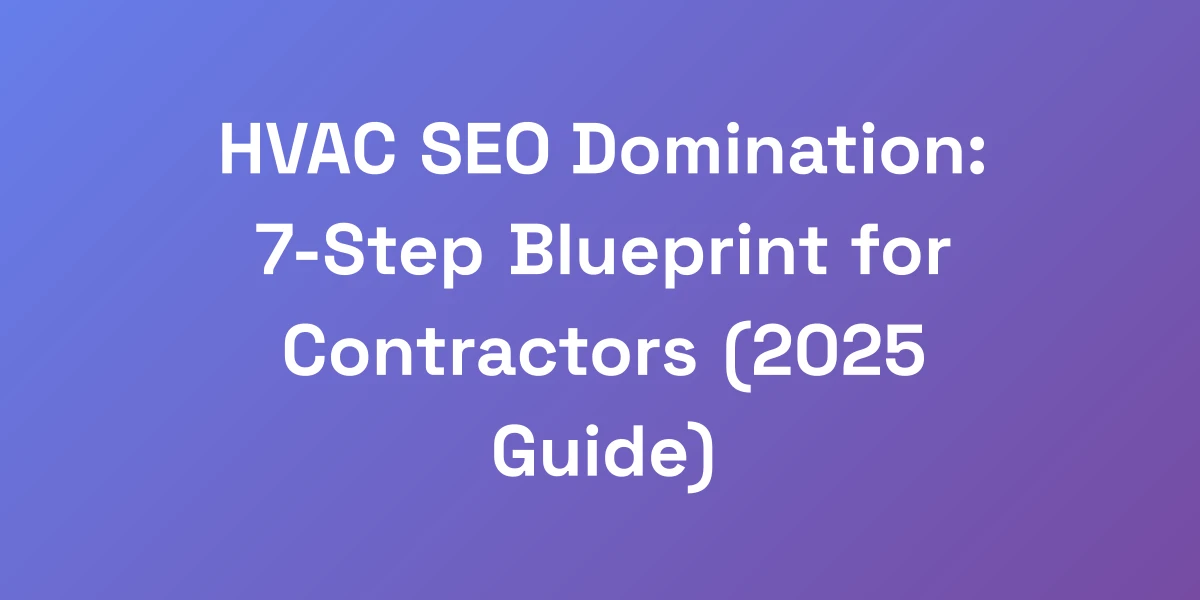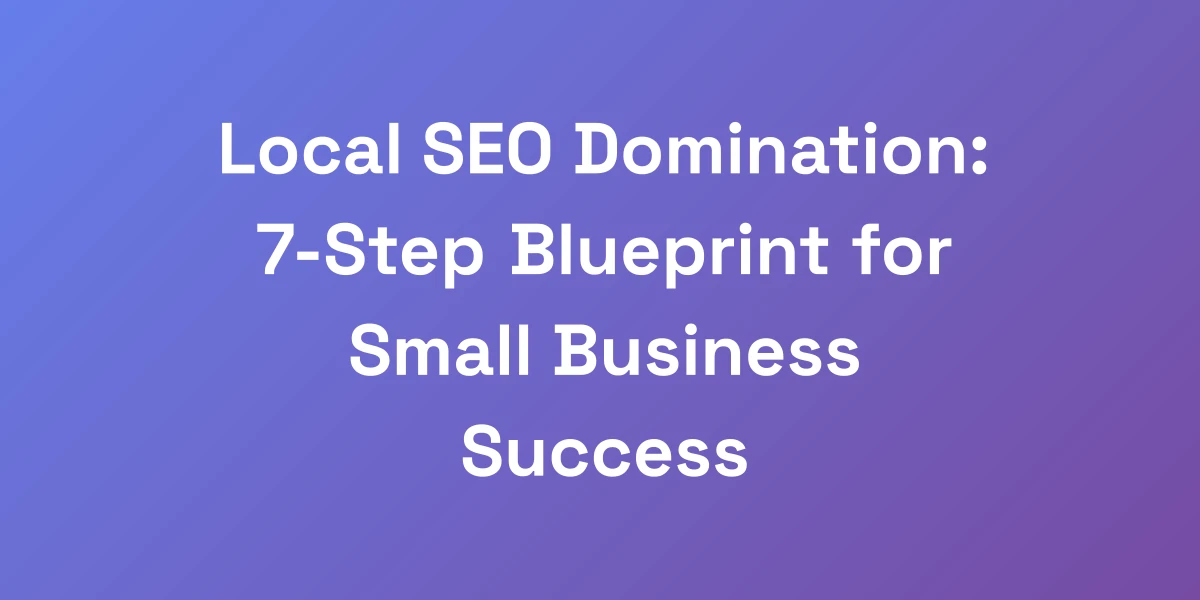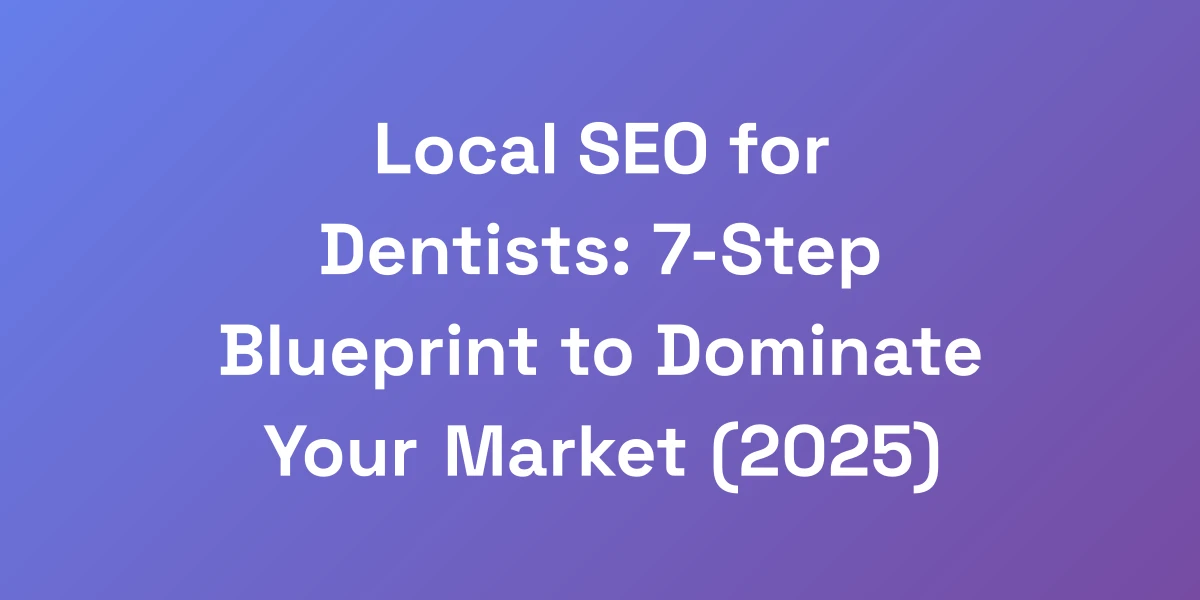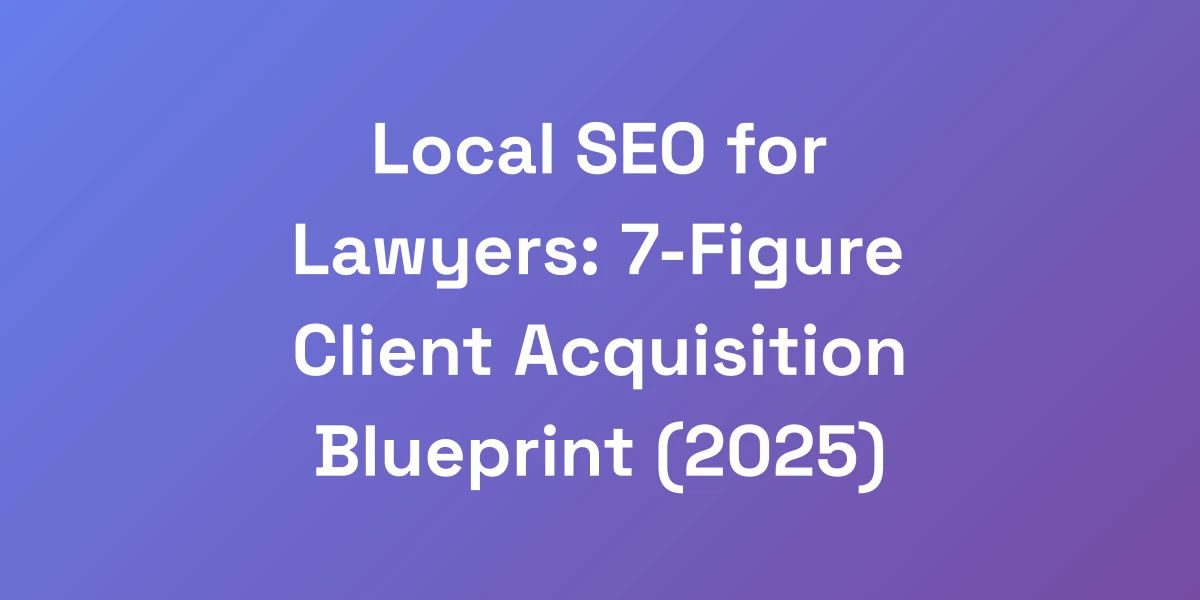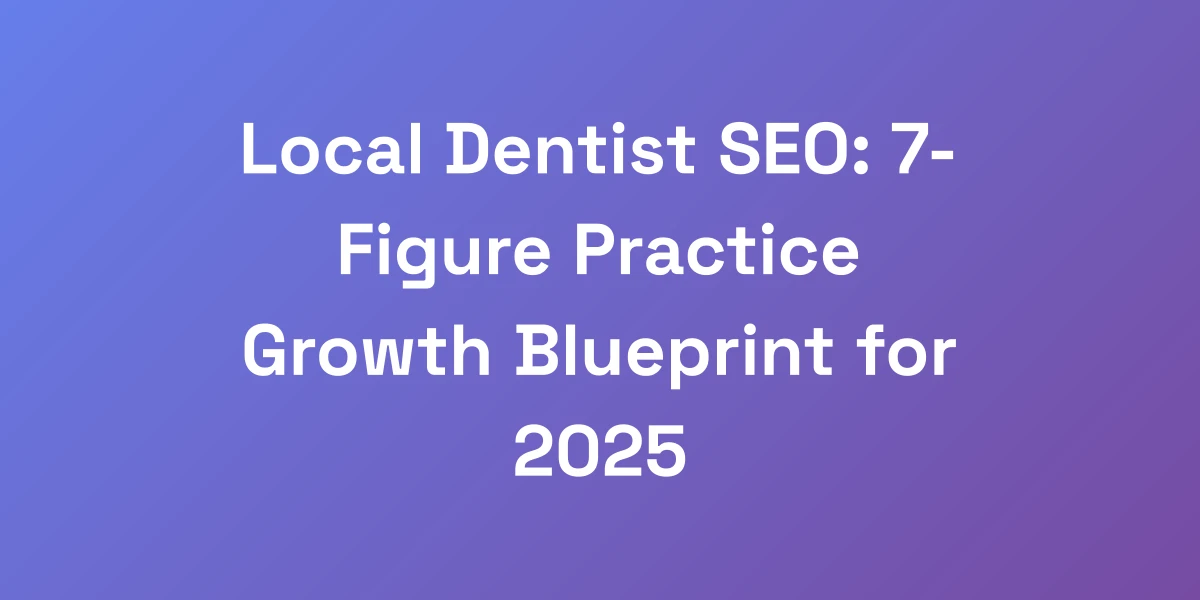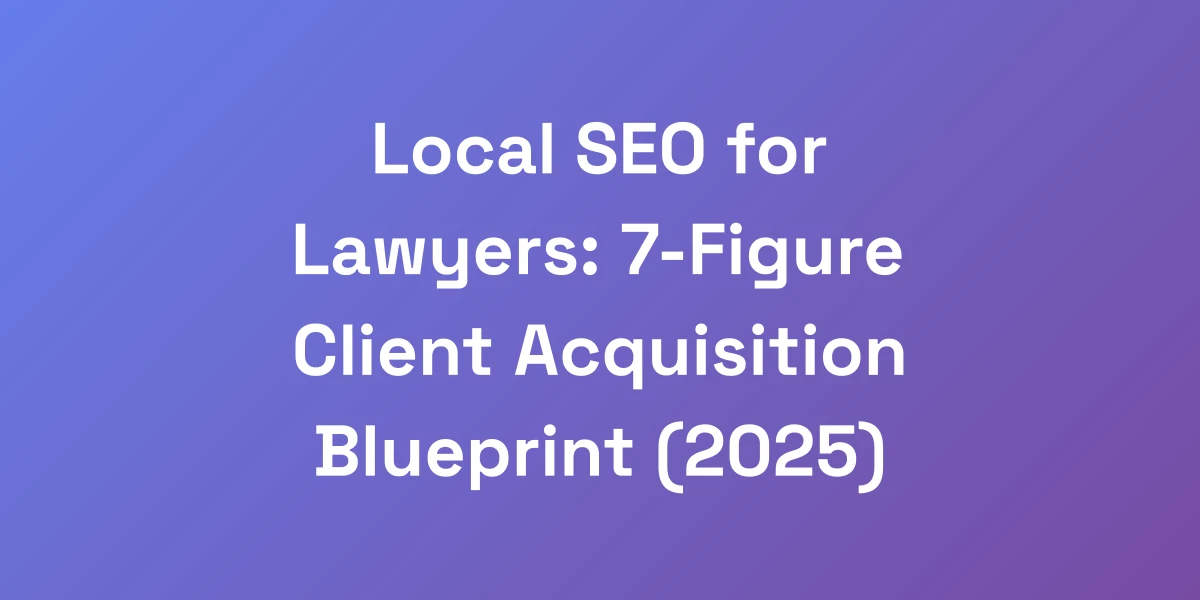
Local SEO for Attorneys: 7-Step Domination Blueprint for 2025
Mar 3, 2025 | By [email protected]
Introduction
Imagine this: every day, dozens of potential clients in your area are searching for legal help. Yet, your firm remains invisible, buried beneath competitors who are stealing your cases right from under your nose. Frustrating, isn’t it?
The truth is, without mastering local SEO for attorneys, you’re leaving a massive profit on the table. We’re not talking about generic marketing fluff here – this is about strategic, actionable steps that can transform your practice.
In a landscape where 93% of legal service searches are local, being at the top of those search results isn’t just nice to have; it’s essential. The challenges are real: outdated marketing methods, fierce competition, and ever-changing search algorithms. But here’s the kicker – most of your competitors are getting this wrong, giving you a golden opportunity to outshine them.
Ready to stop bleeding money and start dominating your local market? Let’s dive into our 7-step blueprint that’s set to redefine how attorneys conquer local SEO in 2025.
Why Most Attorneys Are Bleeding Money Without Local SEO
Let me hit you with some truth: if you’re not dominating local search, you’re literally handing cases to your competitors. I’ve seen law firms transform from struggling to schedule consultations to turning away clients after implementing what I’m about to share, especially by partnering with the best lawyer SEO companies.
Here’s the reality – 93% of legal service searches are local, and if you’re not showing up in those results, you might as well be invisible. The game has changed, and the old methods of getting clients through referrals alone is dead.
But here’s the good news: most of your competitors are doing local SEO wrong, creating a massive opportunity for those who get it right.
The Hidden Cost of Ignoring Local Search
Ignoring local search is like setting up a billboard in the desert – no one’s there to see it.
When potential clients can’t find you online, they default to competitors who are optimized to appear. This not only results in lost cases but also damages your firm’s reputation over time.
- Lost Revenue: Missing out on high-intent local searches directly translates to fewer consultations and clients.
- Reputation Damage: In the digital age, visibility equals credibility. Without a strong online presence, potential clients may question your legitimacy.
- Market Share: Competitors who dominate local SEO capture a larger share of the market, making it harder for you to catch up.
Why Traditional Marketing Fails Modern Law Firms
Traditional marketing methods like print ads and billboards have their place, but they simply don’t cut it in today’s digital-first world.
Clients are no longer flipping through the phone book or catching a billboard drive-by. They’re typing queries into Google, seeking immediate and reliable legal assistance.
- Limited Reach: Traditional marketing is often geographically limited and harder to track in terms of effectiveness.
- Lack of Targeting: Unlike digital strategies, traditional methods lack the precision to target specific demographics or local areas effectively.
- Higher Costs: Print and broadcast advertising can be expensive without guaranteeing a return on investment.
The ROI Advantage of Local SEO for Attorneys
Local SEO offers a remarkable return on investment, often outperforming conventional marketing efforts.
Consider this: 38% of clients search online for legal assistance. By optimizing for local SEO, you capture this high-intent audience right when they’re looking for your services.
- Cost-Effectiveness: SEO targets users actively seeking legal help, ensuring that your marketing dollars are well-spent.
- Long-Term Benefits: Unlike paid ads, which stop generating leads once you stop funding them, SEO efforts compound over time, providing sustained visibility.
- Measurable Results: With tools like automated SEO reports, you can track the performance of your SEO strategies in real-time, allowing for continuous optimization.
Your Competitors’ Biggest Local SEO Mistakes
Here’s where many attorneys trip up – they try to mimic generic SEO strategies without tailoring them to the legal landscape.
Common mistakes include:
- Ignoring Google Business Profiles: Overlooking this vital tool means missing out on prime local search placements.
- Inconsistent NAP Information: Inconsistent Name, Address, and Phone number across directories can confuse search engines and harm rankings.
- Poorly Optimized Content: Creating content that doesn’t address client pain points or lacks local relevance fails to engage and convert.
- Neglecting Google reviews: Failing to generate and manage client reviews can reduce your firm’s credibility and trustworthiness.
The 2025 Local Search Landscape for Legal Services
The landscape of local search is evolving rapidly, and staying ahead means anticipating these changes.
By 2025, we expect:
- Enhanced AI Integration: Search engines will leverage more advanced AI to deliver hyper-relevant results, making precise SEO strategies even more critical.
- Voice Search Dominance: With the rise of voice-activated devices, optimizing for voice search will be a must for attorneys looking to capture this growing segment.
- Increased Importance of Mobile Optimization: As mobile searches continue to surge, ensuring your website is mobile-friendly will be paramount.
- Local Intent Signals: Search engines are getting better at understanding user intent, emphasizing the need for content that directly addresses local legal needs.
Embracing these trends now puts us on the path to dominate local search in 2025 and beyond.
Dominating Google Business Profile: The Foundation of Legal Local SEO
Your Google Business Profile isn’t just another online listing – it’s the cornerstone of your entire local SEO strategy. I’ve seen attorneys 3X their consultation bookings just by optimizing this one element correctly.
The secret? It’s not about filling out basic information – it’s about strategically positioning your firm to trigger Google’s local ranking algorithms.
We’re talking about psychological triggers in your business description, strategic category selection, and review velocity manipulation that most “SEO experts” don’t even know exist.
Strategic Profile Optimization Techniques
Optimizing your Google Business Profile goes beyond the basics. Here’s how we can make it work for us:
- Comprehensive Information: Ensure every section of your profile is complete with accurate NAP details, business hours, and services offered.
- Keyword Integration: Naturally incorporate our target keyword, “local SEO for attorneys,” into the business description and services sections.
- Category Selection: Choose the most relevant categories that potential clients are likely to search for, enhancing our visibility in those specific niches.
Think of your profile as the first impression clients have of your firm – make it count.
Service Categories That Drive Lead Generation
Choosing the right service categories can significantly impact lead generation. Here’s how to do it right:
- Primary Categories: Select categories that best represent your main practice areas, such as “Personal Injury Lawyer” or “Family Law Attorney.”
- Secondary Categories: Include additional relevant categories to capture a broader audience, like “Criminal Defense Lawyer” or “Estate Planning.”
- Localized Categories: Incorporate location-specific terms to further align with local search intent.
By strategically selecting and optimizing our service categories, we ensure our profile appears in the most relevant search queries.
Photo Optimization for Maximum Impact
Visuals play a crucial role in enhancing our Google Business Profile. Here’s our game plan:
- High-Quality Images: Use professional, high-resolution photos that reflect the professionalism and environment of our firm.
- Geotagged Photos: Adding location-specific images can boost our local search rankings by reinforcing our presence in the area.
- Regular Updates: Consistently update photos to show our firm’s growth and current activities, keeping the profile fresh and engaging.
Photos aren’t just decorative; they’re a strategic tool for local SEO.
Review Generation and Management System
Reviews are the lifeblood of our online reputation. Here’s our approach to maximizing their impact:
- Soliciting Reviews: Implement systems to request reviews at optimal times, such as after successful case resolutions.
- Responding Promptly: Engage with every review, showing appreciation for positive feedback and addressing concerns in negative ones.
- Highlighting Testimonials: Feature standout reviews prominently on our profile to build trust and credibility.
Managing reviews effectively not only improves our ranking but also builds a robust online reputation.
Posts and Updates That Convert
Regular posts and updates keep our profile active and engaging. Here’s how we can leverage them:
- Case Studies: Share success stories that highlight our expertise and the positive outcomes we’ve achieved.
- Legal Insights: Provide valuable information on recent legal developments or common client questions to establish authority.
- Promotions and Events: Announce free consultations, seminars, or community events to attract and engage potential clients.
Each post is an opportunity to connect with our audience and drive conversions.
Advanced GBP Features for Attorneys
Beyond the basics, advanced features can elevate our Google Business Profile:
- Booking Integration: Enable direct booking options through our profile, making it seamless for clients to schedule consultations.
- Q&A Section: Actively manage the Q&A section by answering common legal questions, demonstrating our expertise and responsiveness.
- Insights and Analytics: Utilize Google’s insights to track profile performance and adjust our strategies based on real-time data.
Employing these advanced features ensures our profile is not just visible, but also highly functional and user-friendly.
Building an Unbeatable Local Citation Empire
Citations are like digital real estate – but only if you own the right properties. Here’s what nobody tells you: 80% of citation building is a complete waste of time.
I’m going to show you the exact citation sources that move the needle for law firms, and more importantly, how to leverage them for maximum impact.
We’re not just talking about NAP consistency; we’re talking about strategic citation placement that signals authority to Google and credibility to potential clients. To dominate searches such as local SEO near me, focus on high-impact citation sources.
High-Impact Legal Directory Submissions
Submitting to the right legal directories can significantly boost our local SEO. Focus on high-authority platforms like:
- Avvo: A trusted platform where clients frequently search for attorneys based on specialty and location.
- FindLaw: Offers extensive visibility within the legal community and connects us with potential clients actively seeking legal services.
- Justia: Renowned for its comprehensive legal listings, enhancing our firm’s online presence and search rankings.
By focusing on these authoritative directories, we ensure our citations are both relevant and impactful.
Local Business Citation Strategy
Beyond legal directories, local business citations on general platforms can amplify our visibility. Here’s our approach:
- Google My Business: As previously discussed, this is our primary citation source.
- Yelp: A widely-used platform where clients read reviews and discover local businesses, including law firms.
- BBB (Better Business Bureau): A credible source that enhances our firm’s trustworthiness and local reputation.
These general platforms complement our specialized legal citations, broadening our reach and reinforcing our local presence.
Industry-Specific Citation Sources
Leveraging industry-specific citation sources can further solidify our authority. Consider:
- Lawyer.com: A dedicated platform that connects attorneys with clients, boosting our visibility in niche legal markets.
- Martindale-Hubbell: Known for its peer reviews and ratings, it’s a vital source for establishing credibility and trust.
- Local Bar Associations: Membership listings enhance our firm’s legitimacy and local authority.
These specialized citations ensure we’re recognized as industry leaders, not just local businesses.
Citation Audit and Cleanup Protocol
Maintaining citation quality is crucial. Here’s how we manage it:
- Regular Audits: Conduct quarterly audits to ensure all citations are accurate, consistent, and up-to-date.
- Fixing Inconsistencies: Address discrepancies in NAP information across platforms to avoid confusing search engines.
- Removing Spammy Listings: Identify and eliminate low-quality or irrelevant citations that could harm our SEO efforts.
By maintaining a clean citation profile, we reinforce our firm’s credibility and search engine trust.
Advanced Citation Building Techniques
To go beyond the basics, employ advanced techniques that maximize citation benefits:
- Localized Content: Create location-specific pages or blog posts that link back to our citations, enhancing local relevance.
- High-Authority Backlinks: Secure backlinks from reputable local websites and news outlets to boost our citation authority.
- Consistent Branding: Ensure our brand’s name, logo, and messaging are uniform across all citation sources, strengthening brand recognition.
These advanced techniques ensure our citation strategy is both robust and highly effective, setting us apart from competitors.
Content Strategy That Converts Local Searchers
Most attorneys create content that impresses other attorneys – that’s exactly what you don’t want to do. Your content strategy needs to speak directly to your ideal clients’ pain points while simultaneously satisfying Google’s local intent signals.
I’ll show you how to create content that not only ranks but converts cold traffic into hot leads. This isn’t about writing generic legal articles – it’s about strategic content deployment that positions you as the only logical choice in your market.
Local Content Pillars That Drive Traffic
Building strong content pillars ensures our website is a go-to resource for local clients. Focus on:
- Practice Area Guides: In-depth guides on specific legal services we offer, tailored to local laws and regulations.
- Local Legal FAQs: Address common legal questions and concerns specific to our community.
- Client Success Stories: Share detailed case studies that highlight our expertise and successful outcomes for local clients.
These pillars not only attract traffic but also establish us as authoritative figures in our local legal landscape.
Practice Area Page Optimization
Each practice area page should be meticulously optimized to capture local search intent. Here’s how:
- Localized Keywords: Integrate our target keywords seamlessly, such as “local SEO for attorneys” and “family law in [City].”
- Comprehensive Content: Provide detailed information about each practice area, addressing specific local concerns and legal nuances.
- Clear CTAs: Encourage visitors to take action, whether it’s booking a consultation or contacting us for more information.
Optimized practice area pages ensure we capture and convert highly targeted local traffic.
Local Event and News Coverage
Stay relevant and engage with the community by covering local events and news. Here’s our strategy:
- Event Participation: Write about our involvement in local legal seminars, workshops, and community events.
- Legal News Commentary: Provide insights and opinions on recent local legal developments, showcasing our expertise.
- Sponsored Content: Collaborate with local news outlets to feature our firm in relevant articles and stories.
Covering local events and news not only keeps our content fresh but also strengthens our connection with the community.
Client Success Story Framework
Transforming client success stories into powerful content pieces is key. Here’s our framework:
- Detailed Narratives: Share comprehensive stories of how we helped clients overcome legal challenges.
- Client Testimonials: Incorporate direct quotes and feedback from satisfied clients to build trust.
- Visual Elements: Use images, infographics, and videos to make stories more engaging and relatable.
These success stories serve as social proof and demonstrate our firm’s ability to deliver results.
Location-Specific Landing Pages
Create dedicated landing pages for each service area within our locality to capture more targeted traffic.
- Localized Content: Tailor content to address specific legal issues relevant to each area.
- Map Integration: Embed Google Maps to enhance local relevance and ease of finding our office.
- Localized CTAs: Use call-to-actions that encourage local clients to reach out, such as “Call our [City] office today.”
These landing pages ensure we’re capturing the full spectrum of local search queries related to our services.
FAQ and Schema Implementation
Enhancing our content with FAQs and schema markup can significantly boost our visibility and engagement.
- Targeted FAQs: Develop a comprehensive FAQ section that addresses common client questions and concerns.
- Schema Markup: Implement structured data to help search engines understand our content better, increasing the chances of appearing in rich snippets.
- Voice Search Optimization: Frame FAQs in a conversational tone to align with voice search queries.
By optimizing our FAQs and leveraging schema markup, we enhance both user experience and search engine visibility.
Advanced Entity Optimization and Semantic Search
Entity optimization involves recognizing and highlighting the key entities related to our legal practice. Staying updated through resources like the best AI blogs helps integrate advanced techniques into our strategy. Here’s how we approach it:
- Identify Key Entities: Focus on important terms and concepts related to our practice areas, such as “personal injury,” “estate planning,” and “criminal defense.”
- Content Enrichment: Develop content that thoroughly explores each entity, providing in-depth information and insights.
- Internal Linking: Create a robust internal linking structure that connects related content, reinforcing the relationships between entities.
By focusing on entity optimization, we ensure our content is comprehensive and aligned with what search engines recognize as relevant.
Leveraging Semantic Search
Semantic search focuses on understanding the intent and contextual meaning behind search queries. Here’s our strategy to leverage it:
- Intent Analysis: Understand the underlying intent behind local search queries and tailor our content to meet those needs.
- Contextual Relevance: Ensure our content provides clear, concise, and relevant answers to user queries, enhancing its usefulness.
- Natural Language Processing: Use conversational language and varied sentence structures to align with how people naturally speak and search.
By embracing semantic search, we enhance our ability to connect with clients on a deeper level, addressing their specific legal needs.
Knowledge Graph Optimization
Optimizing for Google’s Knowledge Graph can significantly enhance our visibility and credibility.
- Structured Data: Implement structured data markup to provide detailed information about our firm, services, and expertise.
- Consistent Branding: Maintain consistency in our branding across all online platforms to strengthen our Knowledge Graph presence.
- Authoritative Links: Secure backlinks from reputable sources to establish authority and trustworthiness in the eyes of search engines.
Knowledge Graph optimization ensures our firm is prominently featured in rich search results, increasing our visibility and authority.
Content Clusters and Topic Authority
Building content clusters around core topics reinforces our expertise and authority in specific legal areas.
- Core Topics: Identify central themes relevant to our practice areas, such as “personal injury law” or “family law.”
- Supporting Content: Create detailed articles, blog posts, and resources that delve into various aspects of each core topic.
- Interlinking: Establish strong internal links between cluster content and core topic pages to enhance SEO and user navigation.
Content clusters not only improve our SEO but also provide a comprehensive resource for potential clients seeking information.
Utilizing Structured Data for Enhanced Search Visibility
Structured data helps search engines understand and display our content more effectively. Here’s our approach:
- Schema Markup: Implement legal-specific schema to categorize our services, reviews, and contact information accurately.
- Rich Snippets: Enhance our search listings with rich snippets, making them more attractive and informative to users.
- Voice Search Readiness: Ensure our structured data is optimized for voice search, catering to the growing number of voice-activated queries.
By utilizing structured data, we enhance our search visibility and provide a richer user experience.
Optimizing for Google’s Knowledge Graph & Featured Snippets
Being featured in Google’s Knowledge Graph or as a Featured Snippet can significantly boost our visibility and authority. Here’s how we position ourselves to capture these prime real estate spots.
Crafting Content for Featured Snippets
Featured snippets are the answer boxes that appear at the top of Google search results. Here’s how we can capture them:
- Concise Answers: Provide clear, concise answers to common legal questions within our content.
- Structured Formatting: Use bullet points, numbered lists, and well-organized sections to make it easier for Google to extract information.
- Targeted Keywords: Align our content with specific queries that are likely to trigger featured snippets, especially those with local intent.
By optimizing our content for featured snippets, we increase our chances of appearing in this highly visible spot, driving more traffic and credibility.
Leveraging the Knowledge Graph for Authority
Google’s Knowledge Graph aggregates information about entities and their relationships. Here’s how we can leverage it:
- Authoritative Content: Create comprehensive, high-quality content that establishes our firm as an authority in our practice areas.
- Consistent Information: Ensure our NAP, business details, and service offerings are consistent across all online platforms.
- Engage with Trusted Sources: Secure mentions and backlinks from reputable websites to boost our entity’s credibility within the Knowledge Graph.
Leveraging the Knowledge Graph enhances our firm’s authority, making us a trusted source for legal services in our locality.
Rich Media Integration for Enhanced Snippets
Incorporating rich media can make our content more engaging and increase the likelihood of being featured in snippets.
- High-Quality Images: Use relevant, high-resolution images that complement our content and provide visual context.
- Videos and Infographics: Integrate videos and infographics to present information in a more digestible and engaging format.
- Interactive Elements: Include interactive elements like calculators or quizzes that provide additional value to visitors.
Rich media not only enhances user experience but also increases our content’s attractiveness to search engines.
Continuous Monitoring and Optimization
Capturing featured snippets and leveraging the Knowledge Graph requires ongoing effort and optimization.
- Performance Tracking: Use tools like Google Analytics and Search Console to monitor our content’s performance and snippet capture rates.
- Content Updates: Regularly update our content to ensure it remains relevant and accurate, increasing its chances of being featured.
- A/B Testing: Experiment with different content formats and structures to identify what works best for capturing featured snippets.
Continuous monitoring and optimization ensure we stay ahead of the competition and maintain our presence in these coveted spots.
Strategic Keyword Placement and LSI Implementation
Keywords are the backbone of SEO, but it’s not just about stuffing them into your content. It’s about strategic placement and leveraging Latent Semantic Indexing (LSI) to create a comprehensive, contextually rich content experience.
We’re not just targeting “local SEO for attorneys” – we’re diving deep into related terms and concepts that enhance our content’s relevance and authority.
Identifying Primary and Secondary Keywords
Just as SEO for auto dealerships requires tailored keyword strategies, so does legal SEO, ensuring your firm ranks for relevant local queries. Here’s how:
- Primary Keywords: These are our main targets, such as “local SEO for attorneys” and “legal SEO strategies.”
- Secondary Keywords: These support our primary keywords, including terms like “attorney SEO tips,” “law firm SEO,” and “local search optimization for lawyers.”
- Long-Tail Keywords: Focus on more specific queries, such as “how to improve local SEO for family lawyers.”
By identifying and targeting a mix of keyword types, we ensure our content captures a wide range of search intents.
LSI Keyword Integration
Latent Semantic Indexing (LSI) helps search engines understand the context of our content by recognizing related terms and concepts. Here’s how we utilize it:
- Contextual Relevance: Incorporate terms and phrases that are semantically related to our primary keywords, like “Google Business Profile optimization” and “local citation building.”
- Natural Incorporation: Seamlessly integrate LSI keywords into our content without forcing them, maintaining a natural and engaging flow.
- Diverse Vocabulary: Use a variety of related terms to cover the topic comprehensively, enhancing both user experience and SEO performance.
LSI keyword integration ensures our content is rich, relevant, and aligned with how search engines interpret user intent.
Optimizing Meta Titles and Descriptions
Meta titles and descriptions are critical for both SEO and click-through rates. Here’s our optimization strategy:
- Incorporate Primary Keywords: Ensure our primary keywords appear in meta titles and descriptions to signal relevance to search engines.
- Compelling Language: Craft engaging and persuasive meta descriptions that encourage users to click through to our content.
- Character Limits: Adhere to optimal character lengths (50-60 for titles, 150-160 for descriptions) to ensure full visibility in search results.
Optimized meta titles and descriptions not only improve our rankings but also drive more clicks from search results.
Content Hierarchy and Keyword Mapping
Establishing a clear content hierarchy and mapping keywords strategically ensures our content is both user-friendly and SEO-optimized.
- Structured Layout: Organize content with clear headings and subheadings that incorporate target keywords, aiding both readability and SEO.
- Keyword Mapping: Assign specific keywords to individual pages or sections to avoid keyword cannibalization and ensure comprehensive coverage.
- Internal Linking: Use keyword-rich anchor text to interlink related content, enhancing SEO and guiding users through our website.
A well-structured content hierarchy and strategic keyword mapping enhance both user experience and search engine performance.
Storytelling and Narrative Flow
Great content isn’t just about information; it’s about connection. Storytelling and narrative flow can transform our SEO strategy from mundane to memorable.
By weaving compelling narratives into our content, we create an engaging experience that resonates with potential clients and keeps them coming back for more.
Crafting Engaging Narratives
Stories have the power to captivate and persuade. Here’s how we incorporate storytelling into our content:
- Client Journeys: Share stories of how we’ve guided clients through complex legal challenges, highlighting our expertise and empathy.
- Behind-the-Scenes: Offer glimpses into our firm’s culture, values, and day-to-day operations to build a personal connection with readers.
- Success Stories: Highlight significant victories and outcomes that demonstrate our capability and commitment to our clients.
Engaging narratives make our content relatable and memorable, fostering trust and loyalty among potential clients.
Maintaining Narrative Flow
A seamless narrative flow enhances readability and keeps readers engaged. Here’s our strategy:
- Logical Structure: Organize content in a clear, logical sequence that guides readers smoothly from one point to the next.
- Varied Sentence Structures: Mix short and long sentences, and use different types of sentences to maintain a dynamic and engaging pace.
- Transitional Phrases: Use transitions like “furthermore,” “in addition,” and “therefore” to connect ideas and maintain coherence.
A well-maintained narrative flow ensures our content is both enjoyable to read and easy to understand.
Incorporating Rhetorical Questions
Rhetorical questions can engage readers and provoke thought. Here’s how we use them:
- Engage Interest: Ask questions that resonate with readers’ experiences and concerns, drawing them deeper into the content.
- Encourage Reflection: Prompt readers to consider their own situations and how our services can address their needs.
- Enhance Interaction: Create a conversational tone that makes readers feel like they’re part of a dialogue rather than a lecture.
Rhetorical questions make our content more interactive and engaging, fostering a connection with our audience.
Using Analogies and Metaphors
Analogies and metaphors can simplify complex legal concepts and make our content more relatable. Here’s our approach:
- Simplify Concepts: Use analogies to explain intricate legal processes in everyday terms, making them easier to grasp.
- Enhance Imagery: Create vivid images in readers’ minds, making our content more memorable and impactful.
- Build Connections: Relate legal concepts to familiar scenarios, bridging the gap between professional expertise and client understanding.
By incorporating analogies and metaphors, we make our content more accessible and engaging for a broader audience.
Balancing Information and Story
While storytelling is powerful, it’s essential to balance it with informative content. Here’s how we strike that balance:
- Value-Driven Content: Ensure every narrative is backed by valuable information and actionable insights that benefit the reader.
- Educational Elements: Integrate educational components into our stories, such as legal tips or procedural explanations.
- Call to Action: Blend storytelling with clear calls to action, guiding readers towards taking the next step in engaging with our firm.
Balancing story with information ensures our content is both engaging and valuable, driving meaningful interactions with potential clients.
Conclusion
Mastering local SEO for attorneys is not just an option; it’s a necessity in today’s competitive legal landscape. By following our 7-step domination blueprint, we can transform our online presence, outshine competitors, and attract a steady stream of local clients.
Remember, it’s not about chasing trends but about implementing strategic, actionable steps that deliver real results. From optimizing our Google Business Profile to crafting engaging, SEO-rich content, every move we make should be geared towards establishing our firm as the go-to legal authority in our locality.
Ready to take the next step? Start implementing these strategies today and watch your firm soar to new heights in 2025. Let’s dominate local search together and ensure your practice thrives like never before.
Have questions or need personalized advice? Drop a comment below or reach out to us directly. We’re here to help you succeed and dominate your local market!

